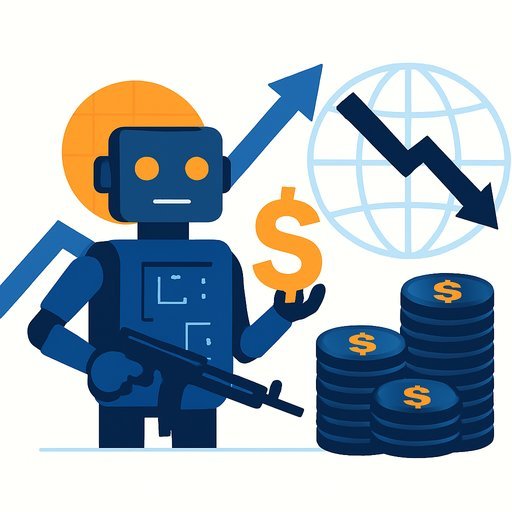The strategic mistake most managers are making with AI
Most leaders still frame AI as a way to speed up coding. Useful, sure-yet painfully small. You've been handed a universal brain that can learn any workflow, improve it, and run it end to end across your company.
If you judge AI by lines of code or sprint velocity, you'll clip its real value. The shift is simple: move from task assistance to process ownership. Treat AI as an autonomous layer that plans, executes, and reports-then let people focus on decisions and trust.
From faster code to owned workflows
Start upstream. Give AI a vague business idea and have it distill a spec, write User Stories, and export a CSV that becomes Jira tickets. You skip long meetings and move straight into development with alignment already in place.
In the IDE, an AI agent that indexed your repos can create the project scaffold, write business logic, and generate tests. When QA opens a bug, the agent can read the description, locate the issue, suggest a fix, write a regression test, push the branch, and update the Jira ticket with a clear summary.
This isn't "help me code." It's "own the development loop," start to finish.
Apply the same thinking beyond engineering
- Finance: Auto-generate quarterly expense analyses, compare spend to forecast, flag anomalies, and draft a one-page summary with next steps.
- Procurement: Scan supplier contracts, compare terms and pricing, and alert owners to renewals 60 days out with suggested renegotiation points.
- Sales Ops: Enrich leads, draft outreach, and update CRM fields after every customer email or call transcript.
- HR: Parse surveys, surface themes by team, and propose 3 concrete managerial actions with owners and due dates.
Adopt an AI-first habit
For any task, pause and ask: "How can AI do the heavy lifting here?" Make that the default, not the exception. Example: before a leadership review, ask AI, "Analyze my last five team reports and the CEO's last three emails. Give me three points to present and likely questions I'll get."
One caveat: set clear data boundaries. Grant only what's needed, log access, and keep humans in the approval loop for anything public-facing or financially binding.
A practical rollout plan (30-60-90 days)
- Days 1-30: Pick 3 high-friction workflows (e.g., backlog grooming, expense variance analysis, contract renewals). Define inputs, outputs, owners, and approval steps. Choose an agent platform and connect read-only data.
- Days 31-60: Ship guided pilots with guardrails. Track cycle time, rework rate, error rate, and stakeholder satisfaction. Add unit tests or validation prompts where quality matters.
- Days 61-90: Expand access, add write permissions with approvals, and publish playbooks. Create an internal "agent store" with owners, SLAs, and change logs.
Metrics that actually matter
- Engineering: lead time for changes, bug MTTR, percent of tickets fully handled by AI, test coverage growth.
- Finance: time to close, variance analysis cycle time, forecast accuracy deltas.
- Procurement: contract cycle time, savings captured vs. baseline, renewal compliance.
- Across teams: manual hours removed, error rate, approval latency, stakeholder NPS.
Minimum viable architecture
- Data access: index code, documents, emails, tickets, and contracts with strict scopes and audit logs.
- Reasoning + memory: use retrieval for context, keep run histories, and store reusable plans and prompts.
- Orchestration: agents that can call tools (Jira, GitHub, ERP, CRM), respect approvals, and write back updates.
- Identity: single sign-on, role-based permissions, and environment isolation (dev/stage/prod).
Risk, handled upfront
- Data safety: isolate sensitive sources, redact where needed, and prefer private models for confidential work.
- Quality: human-in-the-loop for money, legal, and customer-facing outputs; require tests for code changes.
- Compliance: log every action, keep versioned outputs, and align approvals with your existing control framework.
What changes for leaders
Your job shifts from "getting more done" to "deciding what's worth doing." You'll spend less time in status meetings and more time setting direction, defining policies, and pruning work that doesn't move the needle.
Make AI your team's first responder. Reward people for delegating well to agents, not for heroic manual effort.
Where to start this week
- Pick one process that burns hours. Write the ideal input and output. Let AI draft the steps. Ship the smallest working version.
- Mandate that every team identifies two workflows to offload in the next 30 days.
- Publish a one-page policy on data access, approvals, and logging so adoption doesn't stall.
If you want a broad view of impact and use cases, this overview is helpful: McKinsey on the economic potential of generative AI.
If you're formalizing skills and want a structured path for building AI-driven workflows, see this practical option: AI Automation Certification.
The takeaway is clear: stop measuring AI by speed of typing. Start measuring by processes owned, hours removed, and decisions improved. That's where compounding returns live.
Your membership also unlocks:










